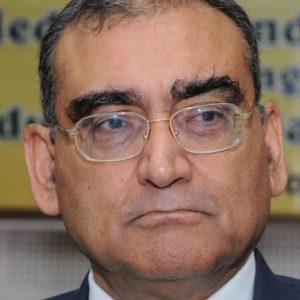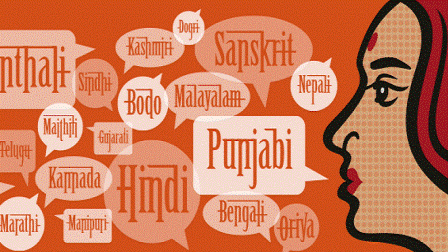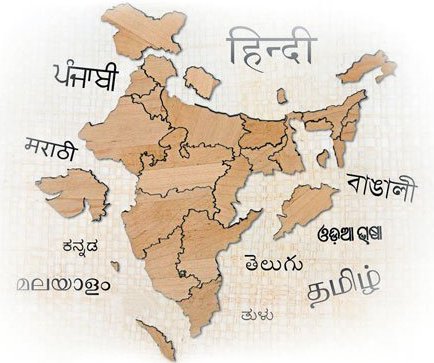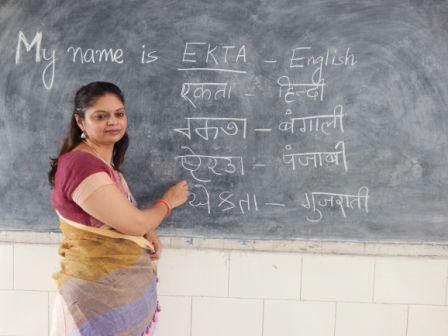

A controversy has arisen in India over the decision of the Madhya Pradesh BJP Govt of teaching in Hindi in medical colleges in the state.
In this article I will not go into the correctness or otherwise of this decision, but will instead discuss the general issue relating to Hindi, particularly in the light of the strong opposition to it in the state of Tamilnadu.
 India has several languages and dialects, all of them deserving equal respect, and I am strongly opposed to imposition of Hindi anywhere.
India has several languages and dialects, all of them deserving equal respect, and I am strongly opposed to imposition of Hindi anywhere.
In fact it was the short sighted policy of some north Indian politicians in the 1960s of trying to impose Hindi that led to agitations and strong opposition, particularly in Tamilnadu (on which the DMK party swept into power).
That having been said, I strongly urge Tamilians and others in India to voluntarily learn Hindi, and I wish to give my reasons.
I do not believe that Hindi is superior to Tamil (or any other language). Tamil has a rich literature coming down from ancient times, and Tamilians are justly proud of it.
However, the fact remains that Hindi is spoken by about 15 times more people in India than Tamil or Telugu or any other state language. It is spoken as the first language in the Hindi speaking belt i.e. UP, Bihar, MP, Rajasthan, Haryana, Himachal Pradesh, Jharkhand, Chattisgarh, and Delhi, as also in the Andaman Islands.
Hindi is also spoken as a second language in Gujarat, Maharashtra, Punjab, Kashmir, Telangana, Goa, north eastern states, etc. In other states too, many people can speak Hindi.
In fact Hindi is already the link language of India and in this connection I may narrate an incident which took place when I was Chief Justice of Madras High Court.

I had been invited by the Gulbarga University (in northern Karnataka) to give a talk. I flew from Chennai to Hyderabad, from where I traveled by taxi to Gulbarga. A Professor of Gulbarga University had come to Hyderabad to accompany me to Gulbarga in the taxi. On the way I heard the Professor and the taxi driver conversing with each other in Hindi.
This surprised me, as both of them were South Indians I asked the Professor about this, and he explained that his mother tongue was Kannada and he did not know Telugu, while the taxi driver’s mother tongue was Telugu but he did not know Kannada. But both knew Hindi, which enabled them to communicate with each other.
When a Judge of the Indian Supreme Court I sat on a bench with Justice HK Sema, who was from Nagaland, and we used to converse in Hindi as all Nagas can speak it.
Once I spoke in Anna University in Chennai and advised Tamilans to voluntarily learn Hindi. I said that if they do not, they will have a lot of difficulty when they go out of Tamilnadu and come to some other Indian state.
For instance, if they come to Delhi, they will have a problem in communicating with taxi drivers, auto drivers, many shopkeepers, etc as these may not know English (since English is known only to 10-15 % people).
Having said all this, I may now say some things about Hindi.
 The Hindi which the common man speaks is really Hindustani ( also called Khadiboli) i.e. simple Hindi, as contrasted to the ‘Klisht’ Sanskritised Hindi of Hindi litterateurs and some others (which latter is really an artificially created language, not spoken by the common man). In fact it is even spoken in Pakistan, though called Urdu there. How did Hindustani come into existence ? It would be interesting to consider this.
The Hindi which the common man speaks is really Hindustani ( also called Khadiboli) i.e. simple Hindi, as contrasted to the ‘Klisht’ Sanskritised Hindi of Hindi litterateurs and some others (which latter is really an artificially created language, not spoken by the common man). In fact it is even spoken in Pakistan, though called Urdu there. How did Hindustani come into existence ? It would be interesting to consider this.
Hindustani (or Khadiboli) is an urban language, spoken in towns and cities (in the rural areas around them local dialects are spoken).
Almost all cities in the world originated as market places (mandis). This was only possible when the productive forces had developed to an extent that people were producing more than they could themselves consume, and hence the surplus had to be sold or exchanged. In other words, commodities (i.e. goods for sale or exchange, and not for self consumption) began to be produced.
Since the seller and the purchaser had to have a known place where the transaction of sale and purchase could take place, market places (mandis) were created, which later became cities.
Now the seller and purchaser must have a common language, otherwise the transaction of sale and purhase would not be possible. Hence Khadiboli (Hindustani) arose as that common language of the market.
To give an illustration, in Allahabad (where I have mostly lived) Khadiboli is spoken in the city, but in the rural areas around Allahabad city the dialect spoken is Avadhi (in which Tulsidas wrote his Ramcharitmanas). In Mathura city Khadiboli is spoken, but in the rural areas around Mathura Brijbhasha (the language of Surdas) is spoken.
In Benaras city or the other eastern cities of U.P. Khadiboli is spoken, but in the rural areas around these cities Bhojpuri is spoken. In parts of northern Bihar Maithili is the rural dialect (in which the great poet Vidyapati wrote) but in the cities there also Khadiboli is spoken.
In central Bihar Khadiboli is spoken in towns, but Maghai dialect is spoken in rural areas. In Rajasthan and Madhya Pradesh Khadiboli is spoken in the cities, but in the rural areas local dialects (e.g. Mewari and Marwari in Rajasthan) are spoken which an outsider cannot understand.
 This shows that in vast areas of north India the rural population speaks different dialects, but the urban population had a common language, Khadiboli. How did this happen?
This shows that in vast areas of north India the rural population speaks different dialects, but the urban population had a common language, Khadiboli. How did this happen?
This happened because a vast common market had been created mainly in North India (due to the development of the productive forces) even before the coming of the Mughals. A trader traveling from Bihar or Madhya Pradesh could easily sell his goods in a city in Uttar Pradesh or Rajasthan or Punjab because there was a common language, Khadiboli which both seller and purchaser knew (apart from knowing their local dialects).
Thus Khadiboli is the common language of the cities in large parts of India. Even in many parts of the non-Hindi speaking belt Khadiboli is understood and spoken as a second language. Thus, if one goes to Kolkata or Bangalore or Gujarat or Lahore or Karachi or even in many parts of south India he can converse in Khadiboli with people living in the cities (though there might be difficulty in rural areas).
Also Read: Phase out English intelligently. But prepare Indian languages for the difficult task first
I have explained all this in detail so that Tamilians and others may understand about Hindi (or rather Hindustani). It is a language uniting India, and will further unite us if all Indians learn it. ![]()
___________
Also Read:
Centre’s Opaque Auction Rules For Pulses Rip Off Govt Coffers, Help Millers Strike Rich
Need to amend laws like UAPA to provide for punishment for those who slap false cases
Global Arms Trade: Who are the real winners?
Why not 40 pc tickets for women in Punjab and elsewhere?
Punjab – How a deadly cocktail of Agri-Water-Energy nexus going to destroy it?

Disclaimer : PunjabTodayTV.com and other platforms of the Punjab Today group strive to include views and opinions from across the entire spectrum, but by no means do we agree with everything we publish. Our efforts and editorial choices consistently underscore our authors’ right to the freedom of speech. However, it should be clear to all readers that individual authors are responsible for the information, ideas or opinions in their articles, and very often, these do not reflect the views of PunjabTodayTV.com or other platforms of the group. Punjab Today does not assume any responsibility or liability for the views of authors whose work appears here.
Punjab Today believes in serious, engaging, narrative journalism at a time when mainstream media houses seem to have given up on long-form writing and news television has blurred or altogether erased the lines between news and slapstick entertainment. We at Punjab Today believe that readers such as yourself appreciate cerebral journalism, and would like you to hold us against the best international industry standards. Brickbats are welcome even more than bouquets, though an occasional pat on the back is always encouraging. Good journalism can be a lifeline in these uncertain times worldwide. You can support us in myriad ways. To begin with, by spreading word about us and forwarding this reportage. Stay engaged.
— Team PT


Copyright © Punjab Today TV : All right Reserve 2016 - 2024 |